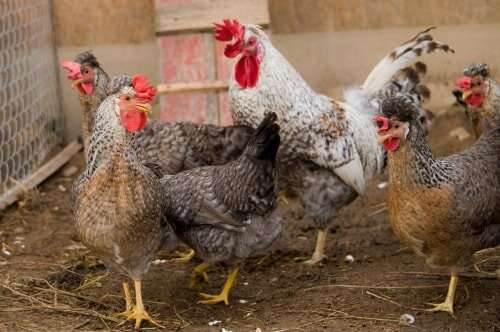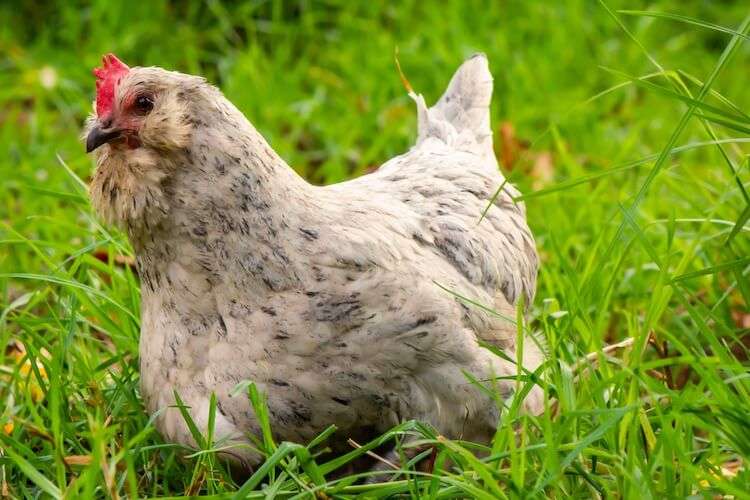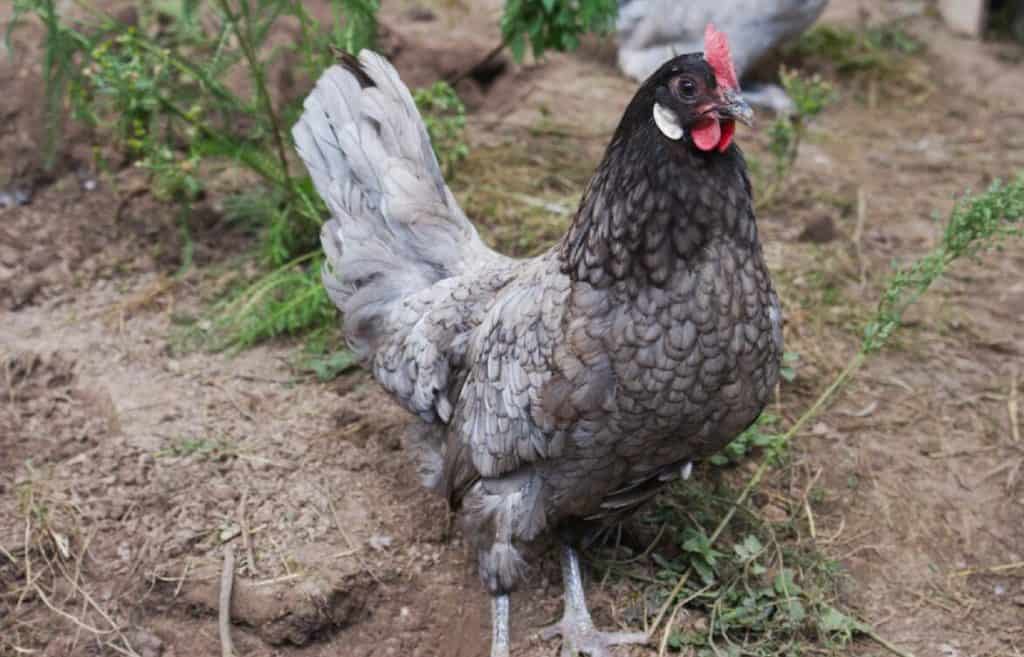
The Leghorn chicken breed hails from Tuscany, in central Italy, and is also known as Livorno or Livornese. The western Italian port city of Livorno in Tuscany was the origin of the first bird export to North America in 1828. The breed was initially referred to as “Italians,” but by 1865 it had adopted the conventional Anglicization of “Livorno,” which was “Leghorn.”
Description
Its body is triangular in shape, and its back is long and flat. They have a single, six-pointed red comb, and their wattles are red as well. Earlobes are white or cream in color. The beak is yellow to horn-colored, while the eyes are reddish-bay in color. There is a small downward curvature in the beak. The crest on the forehead of both sexes should not slip forward since it will block their vision. Long neck that descends to a big breast. The bird has somewhat broad shoulders that transition onto a back that is flat with a modest slope.
The hens somewhat lessen the angle at which the males hold their tails. The body is held close to the wings. The Cream Legbar has a color scheme that combines cream and grays. The males’ tail and breast have the most pronounced barring. Female barring is much more subdued, and her neck and breast may have a salmon hue. Legs should have four toes, be clean, and be yellow in hue. They move with an alert, upright carriage. The skin is yellow as well.
As Pet

Care
Cream Legbars are generally manageable for beginners, however all keepers should research a breed before bringing one into their flock. Here are some advice on how to take care of these lovely birds.
Housing
Cream Legbars require just four square feet of space in the coop per bird, but you can always offer them extra if you can. Additionally, each chicken should have access to 12 inches of roosting area. They will spread out around their roosting area in the summer, but in the winter, they may congregate on one roost to be warm. Additionally, you’ll require one nesting box for each four chickens. For this breed, standard nesting boxes (12 x 12 x 12 inches) work well. Anything larger could force chickens to crowd into a single box, breaking the eggs.
When outside the coop, they ought to be permitted to roam free because they are natural foragers. If the area is large enough, they can be contained, but cramped quarters will make them uneasy. If you must restrict them, give each bird a minimum of 10 square feet of run space. You should occasionally let them run free if you keep a fence around the run area. These birds will become flight risks if they are kept in captivity for an extended period of time. You might want to think about choosing a different breed of chicken if you don’t feel comfortable letting your birds roam freely.
Feeding
Give your birds layer food containing between 15% and 19% protein. When they are chicks, you can feed them a chick feed with increased protein; but, as soon as they reach the pullet stage, you should switch them to an adult meal. Cream Legbars thrive when given the freedom to roam. Chickens that are allowed to travel freely during the day to forage are said to be free-range. They’ll come back to the coop at night as long as they have access to food and water. They feel safe in the coop, so until a predator chases them away, they won’t flee from it.
The extra nutrients that hens cannot obtain from pellets or feed are provided when they are allowed to roam free. These nutrients can be obtained by them from a variety of plants and invertebrates. Additionally, foraging keeps chickens from getting bored and helps keep your land free of pests.
Temperament
Cream Legbars are generally amiable, manageable, and highly gregarious. They do, however, have a wild side, which explains why captivity doesn’t appeal to them much. They are skilled foragers, keen observers, and knowledgeable predators. Especially during the mating and breeding season, roosters can be violent.
Table





